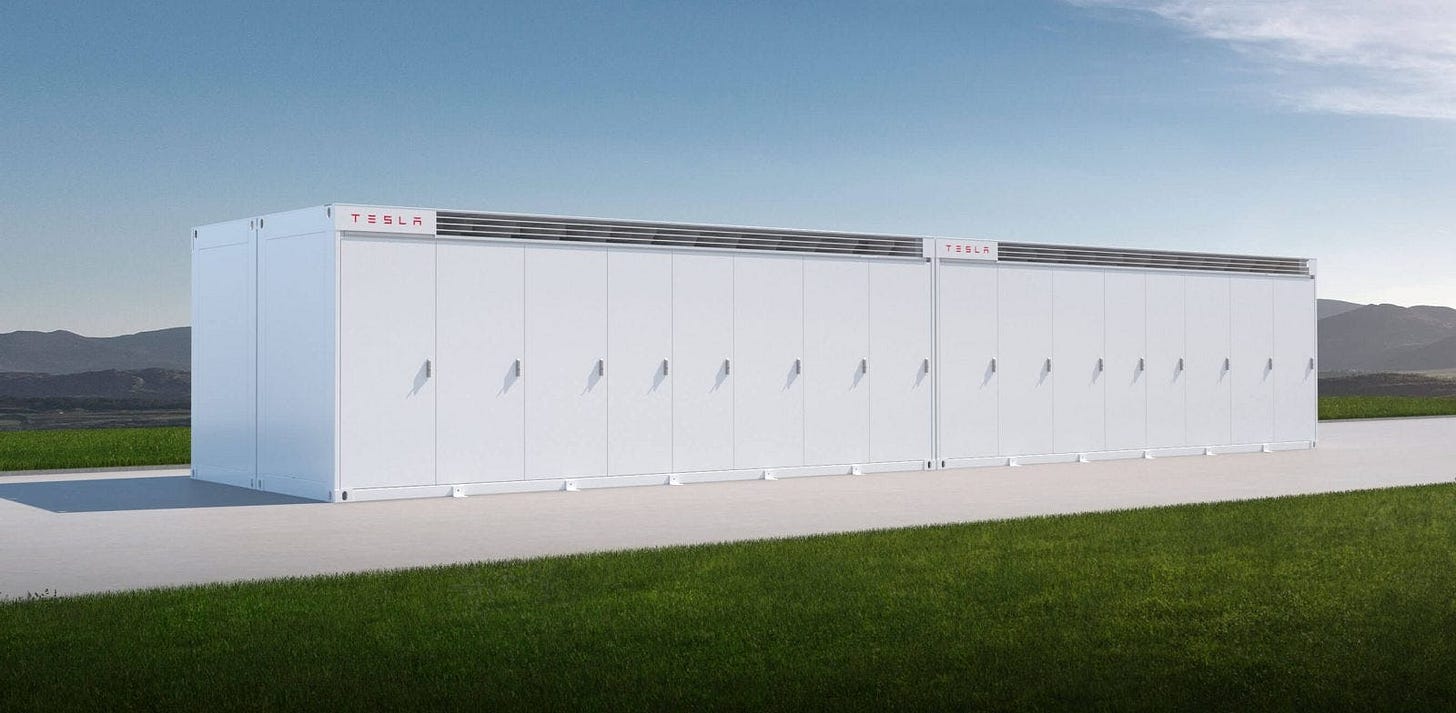This Could Wipe Out Tesla's Only Growth
And the implications are huge.

Tesla has had a bit of a rough year. Sales are way down, their stock is performing horribly, and a woeful Robotaxi rollout has tarnished the sheen of their AI self-driving push. It seems like every aspect of Tesla’s business is in decline — that is apart from one. Their grid-level energy storage is the only part of their business that has boomed over 2025, with sales increasing by over 67%! Some are even asking if such monumental growth could save Elon’s pathetic arse. Well, don’t count on it, because Musk’s nemesis, BYD, has just delivered a slam dunk on Tesla’s grid energy storage ambitions.
So, if Tesla’s grid battery business is growing, they must have some damn good batteries, right?
Well, their latest Megapack 3 seems impressive. Each unit is the size of a 20 ft container, which makes it easy to transport, and contains 5 MWh of battery capacity, for a price of around $1.3 million. Now, Tesla did plan on using their in-house designed and produced 4680 cells for this, but they have turned out to be a bit crap, so instead they opted for giant 2.8-litre LFP prismatic cells from China’s CATL. Because they use LFP technology, they have a lifetime rating of 10,000 charge cycles! As such, the lifetime cost per kWh stored is only around $0.026.
These figures are impressive. In 2020, grid-level energy storage was estimated to have a lifetime cost of around $0.15 per kWh stored. So the Megapack 3 represents a serious improvement.
Unfortunately, its success is dwarfed by BYD’s recently announced HaoHan energy storage system.
These units are the same size (roughly that of a 20 ft container), yet they have 10 MWh of capacity! That is double the energy density of the Megapack 3. You might think that BYD had to use lithium-ion batteries to achieve this feat, but no; the units use the same LFP Blade Batteries BYD designed and built for its cars. This shows just how efficient they can be with this technology and battery package. Like Tesla’s Megapack 3, they are also rated for 10,000 charge cycles. However, the vertically integrated supply chain, reduced transport and installation costs, reduced maintenance costs (given that it uses 76% fewer components than a system like the Megapack 3), and reduced material costs make these units significantly cheaper. As such, the HaoHan has a lifetime cost of only $0.014 per kWh stored.
All in all, BYD’s option uses 33% less land space and is 53% cheaper than Tesla’s Megapack 3.
So, why would you choose the Tesla option over the BYD option?
Certainly, Trump’s tariffs may hinder BYD’s expansion of this option in the US. But the Megapack 3 uses Chinese-sourced cells, too. For everywhere else in the world, the BYD option makes far more sense. Because BYD has complete control of the supply chain and is building multiple battery factories across the globe, its supply chain is far more robust. They are also geopolitically much less of a risk than using Musk-controlled technology for critical infrastructure. China is also a closer trading partner to the majority of the world than the US, so politically it makes sense to strengthen that tie too. Particularly as demand for these batteries increases, BYD seems happy to build local factories (like the one in Hungary) to meet this demand and boost the local economy.
I have been scratching my head trying to think of a single reason you would choose the Tesla system over the BYD system, and the only one I can think of is that you have already ordered it and are now waiting for it to be delivered.
So, will Tesla’s grid-level energy storage business continue to boom? I doubt it. It isn’t just BYD making Musk’s offerings look outdated. Furthermore, Musk has given up on manufacturing. He knows it can’t boost Tesla’s value and line his pockets enough. He is fully focused on riding the AI bubble. Give it another year or two, and I wouldn’t be surprised if Tesla stopped selling these systems altogether so that Musk can focus the entire business on making his shitty Optimus robot even vaguely useful.
Thanks for reading! Don’t forget to check out my YouTube channel for more from me, or Subscribe. Oh, and don’t forget to hit the share button below to get the word out!
Sources: Notebook Check, Electrek, Tech Crunch, Motley Fool, Electrive, Notebook Check, Best Mag, PNNL


In addition to storage, batteries provide a bunch of grid services like frequency control. Tesla claims their batteries can replace spinning reserves from thermal power more effectively than alternatives like synchronous condensers. I don't know whether this is correct and whether BYD can match Tesla, but it might be worth looking into.
The Muskrat’s “businesses” are all failing!!!